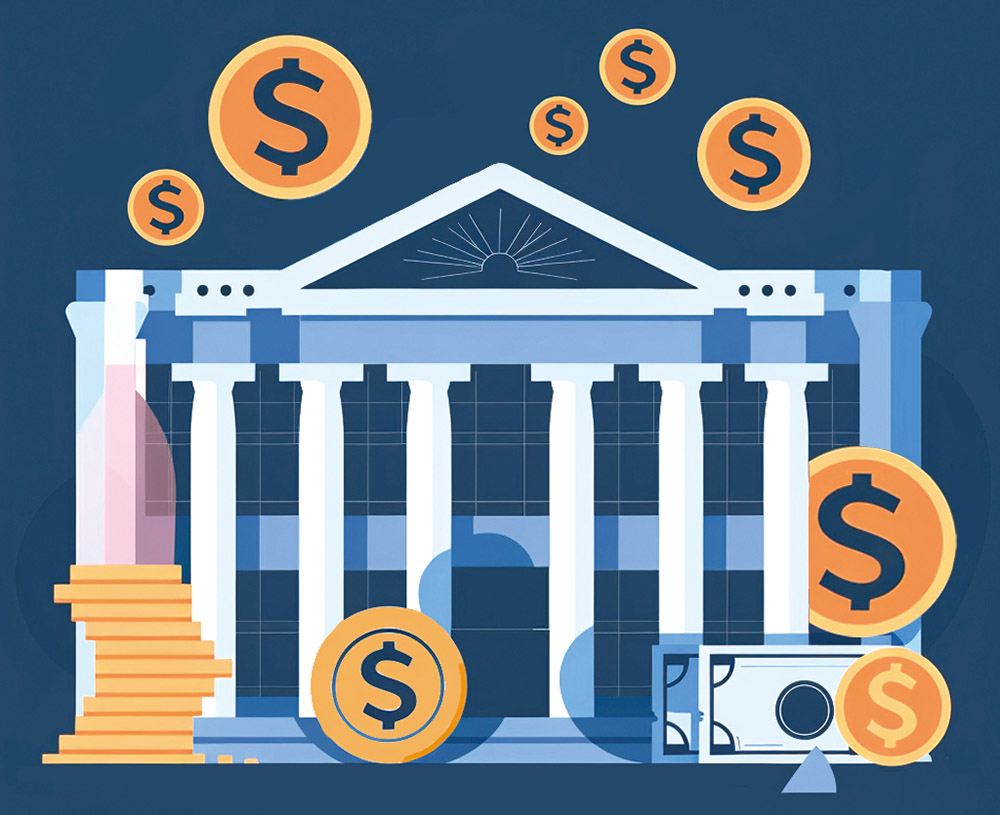Growing risks from Washington’s policies undermine global confidence in the US currency

Since his election win, Argentine President Javier Milei’s drastic reform plan to replace the local currency with the United States dollar has rekindled the debate over whether developing nations should dollarize the economy.
Dollarization means the US dollar plays a more important role in a country’s economy. It could be either a market phenomenon, or an act of government that relinquishes the local currency and causes the loss of financial sovereignty.
The question here is whether the benefits of dollarization outweigh its costs.
Dollarization may bring three types of benefits.
READ MORE: E-CNY expansion deepens financial integration
First, it injects stability into an economy. When a country is mired in a crisis of confidence over its currency and hyper-inflation, using a more stable and reliable foreign currency helps protect the value of assets and market transactions.
Second, dollarization can reduce the costs of international transactions, and integrate a country into the global financial market. Since the US dollar is the leading global currency, dollarizing the economy can facilitate a country’s economic and trade exchanges with other countries, and reduce the costs of currency exchanges.
Third, dollarization can help enforce fiscal discipline and promote financial reforms. The governments of some developing nations have the impulse to print excessive money for short-term political gains. Dollarization can force the government of a dollarized country to accept strict fiscal discipline and prevent it from pumping too much money into the economy.
Despite these benefits, dollarization also comes with drawbacks.
First, it deprives a country of its right to collect seigniorage, which is the profit made by a government from issuing currency, especially from the difference between the value of money and the cost to produce and distribute it.
Second, dollarization undermines a country’s currency sovereignty, and removes the government’s ability to manage the economy through monetary tools. Complete dollarization means an economy will lose the financial guarantee provided by the lender of last resort, which is its central bank.
Thus, if the economy faces a liquidity crunch, it will be unable to deal with it via monetary tools. In addition, a country’s capacity to control the amount of currency in circulation through adjusting monetary and exchange rate policies will be compromised.
Third, a dollarized economy is more vulnerable to external shocks.
As the priority of the US Federal Reserve is to deal with domestic economic issues, it does not pay heed to the spillover effects its monetary policies have on other economies. In other words, the US will not change its monetary policies to accommodate the needs of dollarized economies.
Fourth, dollarization can create path dependence. Many dollarized economies faced immense challenges in reestablishing their local currency’s status.
Turkiye became a highly-dollarized economy in the 1980s, having over 60 percent of its broad money supply, or M2, in the form of US dollar deposits. The country pushed for de-dollarization through the “reverse currency substitution” in the early 21st century.
However, to tackle the 2008 global financial crisis, Turkiye borrowed large amounts of foreign debts, which compromised its capacity to withstand pressure caused by deteriorating macroeconomic fundamentals. By the end of 2020, Turkiye’s share of dollarization approached 60 percent of the total deposits.
Another case in point is Laos. The Southeast Asian country’s ratio of US dollar deposits to total deposits reached a peak of 80 percent in 1997. As its economy recovered and inflation went down, Laos tried to reestablish the status of its local currency. As a result, the share of the US dollar dropped to 44 percent in 2010. However, since 2011, the worsening global economic environment pushed up the deficit of Lao’s current account for nearly a decade, and the local currency was under depreciation pressure for a long time. These factors drove up the proportion of US dollar back to nearly 50 percent in 2020.
Due to the multiple drawbacks of dollarization, it becomes more costly for developing countries to dollarize their economies. Plus, the fast-evolving global landscape puts a big question mark over the reliability of the US dollar-dominated global financial system and the credibility of the US dollar, which in turn has triggered a new wave of de-dollarization in the developing world.
ALSO READ: Digital yuan is progressing very well
The massive quantitative easing policy adopted by the US after the global financial crisis has significantly pushed up the US government’s debt levels, eroding global confidence in the US dollar. Furthermore, the US imposed unprecedented harsh financial sanctions against Russia following the outbreak of the Ukraine crisis, which has prompted other countries to realize the US dollar is no longer a reliable store of value and medium of exchange.
The unscrupulous use of financial sanctions by the US is another important factor to be considered by countries contemplating the dollarization of their economy. Although the US dollar still remains the dominant global currency, its primary status is in decline. Thus, going forward, the world will see increasing practices of de-dollarization.
Huang Yutao is an assistant researcher at the Institute of World Economics and Politics and the National Institute for Global Strategy at the Chinese Academy of Social Sciences. Xiong Aizong is a senior research fellow at the Institute of World Economics and Politics and the National Institute for Global Strategy at the CASS. The authors contributed this article to China Watch, a think tank powered by China Daily.
The views do not necessarily reflect those of China Daily.


